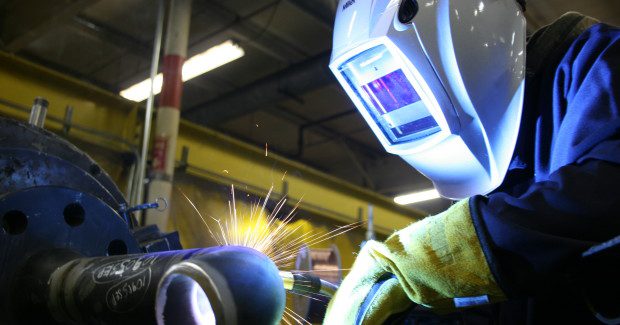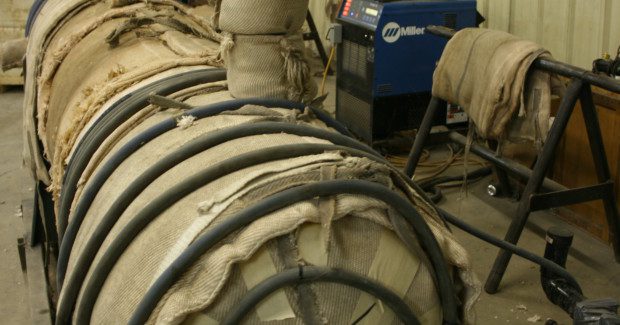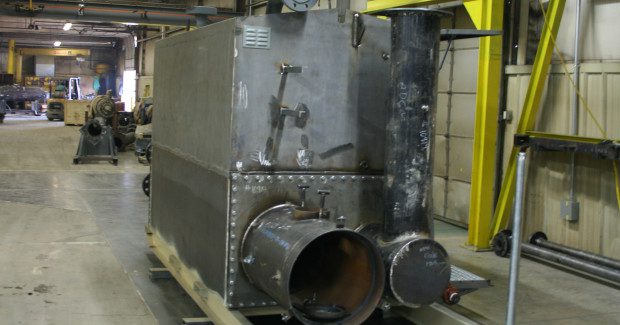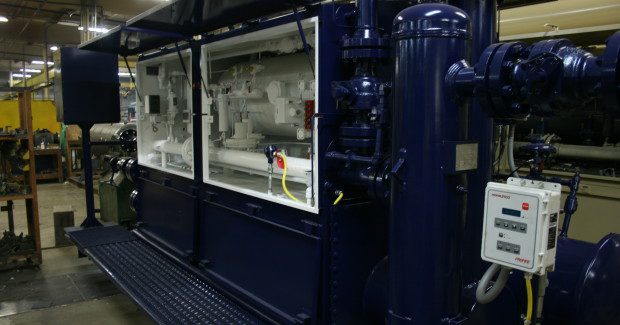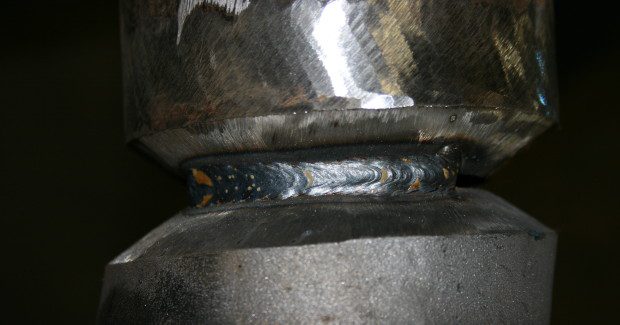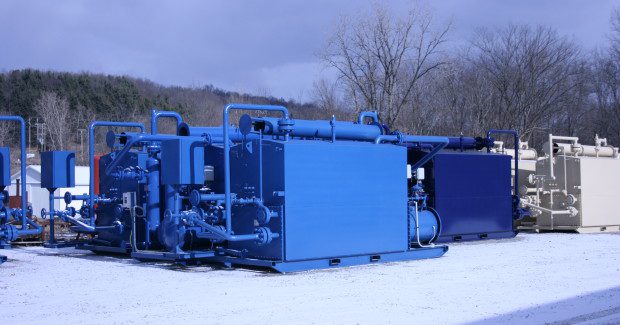The Pride of the Pipeline
By changing welding processes, this oil and gas production equipment manufacturer cut more than 200 man-hours out of each product to thrive during the shale gas boom.
Posted: May 30, 2014
Those improvements are impressive on a per-joint basis, but the true benefit of reduced lead times for its customers comes into perspective when you consider the entire process that goes into creating one gas processing unit.
“If you take the 400 man-hours of work (that goes into one system), we probably have about 150 hours of it that’s welding, or preparation for welding,” says Murray. “If we took that and did it with a TIG and Stick process, we estimated that we’d probably take that (welding portion) up to about the 400 hours of time that it’s (currently) taking us to produce the whole unit, and still have another 250 hours (of additional work) to put into the unit.”
That puts total production time at 400 hours with RMD and Pulsed MIG, and approximately 650 hours with TIG and Stick — a 250 hour savings, or more than a one-third cut in production time.
NEARLY PERFECT TESTING RATES ON PRESSURE VESSELS
One of the key components of the systems Pride of the Hills manufactures is the actual sand separator, which is a pressure vessel that ranges in thickness from one-and-a-half to four inches, depending on the model. The company previously relied on a standard short arc MIG process to put in the root pass and two hot passes. This is done to build up the root with enough material to support a submerged arc, or sub-arc, welding process that completes the rest of the joint. The sub-arc process takes approximately eight hours as a dual-headed system welds up both heads simultaneously.
Fit-up and root pass quality is critical as each vessel is 100 percent X-rayed. If there is a flaw, such as lack of fusion in the root, all four inches of weld have to be gouged out and redone – a major setback in productivity. While Murray says his welders had high passing rates with the established process – in the mid to upper 90 percent range – he thought it worthy to implement RMD in the root pass and Pulsed MIG for the hot passes to see if they could get that rejection rate as close to zero as possible.
In this application, RMD and Pulsed MIG didn’t increase productivity in terms of faster production rates, but it did succeed in Murray’s goal of reducing rejection rates and rework. “(RMD), in that application, is a quality gain for us,” says Murray. “Where we gain efficiency is a lack of failures. The failure rate has just gone to near zero. When we’re putting a three-and-a-half or four-inch weld on top of that root pass, if we make a mistake in the root, we’re air arcing for a couple of hours to get down to fix it, and then we have several hours of filling that back up by hand. It’s just so important that we make that good first root pass.”
SIMPLIFY TO GAIN ADVANTAGE
The bulk of the manual welding performed at Pride of the Hills in these applications is done with the PipeWorx Welding System. PipeWorx is a multiprocess power source capable of performing RMD and Pulsed MIG welding, and offers a number of features that simplify the welding processes and help new welders learn faster. This includes quick process changeover with no need to manually switch polarity or cables and hoses between processes. Welders can also trigger through pre-set programs while at the welding joint, eliminating downtime associated with walking back and re-setting the machine.
“What we found with the PipeWorx, and why we gravitated towards it is its ease of setup,” says Murray. “To be able to walk up to the machine, flip open the front cover and actually just push a couple of buttons to select the wire, the gas, the type of process we want to use, and then be able to pre-program several amperage and voltage settings that we can just trigger through as we go from pass to pass. One of the big advantages was just the ease of use.”
That flexibility in changing weld settings by simply triggering the gun is particularly helpful to his workers.
“When we get into our hot passes and our cover passes, when we’re moving from a three-inch to a four-inch, to a six-inch or maybe a ten-inch thick material, different widths of welds as we get up higher, they really like that they can just trigger from one program to another. We don’t have to go back to the machine and turn knobs.”
The PipeWorx also makes these processes considerably easier to learn – important as, with most in the manufacturing industry, Pride of the Hills is challenged with finding skilled labor in the region. One of the ways it does this is through adaptive technology. The power source senses changes in variables such as tip-to-work distance and welder movement to adjust weld parameters and ensure optimal weld conditions and quality.
“What happens is, if I’m running an (older welding power source) that’s not as smart, per se, and I’m depositing metal and my gap changes a little bit, goes in or out, I’m forced to slow down, speed up, change my tip-to-work distance, trying to make up for that change in the weld gap. Now the machine has the ability to sense that something is changing here… so now the machine is adapting to those changes versus us having to train the person to adapt to it.”
Ultimately, Murray finds it’s the right power source for the job. “When your workers are getting great quality results and they’re saying, this is the one we want, that’s where you go. We try to put them in the best position to succeed as possible, and if you have a machine that helps you do that, you want to use that machine.”
Sidebar
CUT OUT THE MIDDLE MAN: Stress Relieving with Induction Heating
Under the guidelines of ASME Section VIII Division 1, any pressure vessel exceeding one-and-a-half inches in thickness is required to undergo post-weld stress relief. Depending on the thickness of the vessel, this typically involves ramping up its temperature to approximately 1,100 deg F.
“Our choices were to ship that product out to a third party that has an oven able to do the work,” says Murray. “In Northern Ohio, there’s only a couple of places that have the ability to do that. One of the first things we started looking at was just how can we do this process in house?”
The company began looking at ovens of their own, until they were introduced to the induction heating process as made possible by the Miller ProHeat™ 35 induction heating system. With an induction heating system, heat is created electromagnetically in the part by placing it in an alternating magnetic field created by liquid-cooled induction heating cables. The induction cables are wrapped around the part, or on the part, and do not heat up themselves, but create eddy currents inside the part that generate heat.
“We’re able to basically pinpoint the heat where it’s needed and not waste energy heating the rest of the vessel,” says Murray. “These vessels weigh anywhere from 5,000 lb up to 10,000 lb. The oven technology forces us to heat the whole vessel where the Miller product can just pinpoint that to those areas. So we decided to buy the product, bring it in and start implementing it. It saved us a tremendous amount of time in just trucking and handling the product. The biggest thing is having control over our own product. Now it’s not going out to a third party vendor. We’re in control of the process doing the stress relief. With the recorder on it and the way we set up . . . it’s particularly easy to meet the ASME code requirements. It’s been a big advantage.”
The ProHeat 35 gives Pride of the Hills the control to ramp up the temperature as fast or as slow as dictated by the code. Similarly, after spending the prescribed amount of time at its soak temperature, the system can ramp down temperature to code requirements. This overall process can last 5 hours to 12 hours, depending on the thickness of the vessel. Having that control, and being able to document the entire process through a digital recorder, is important to the quality control process and, ultimately, in documenting to the customer that the part was fabricated properly.
“Our quality control department looks at it and then our authorized inspector looks at it, and then – as on all of our equipment – we send our customer an as-built document (that includes this data),” says Murray.
While quality is paramount, the ability to do it all in house and not rely on third-party vendors has helped shorten lead times noticeably. Aside from the six hours of trucking and handling previously associated with getting a vessel to the oven, Murray also took into account the labor, diesel fuel, truck wear and tear, and being at the mercy of the oven owner’s schedule which could add unnecessary downtime to the process. All together, it added up to a smart change. “We were literally able to cut at least a couple of days (out of the process),” says Murray.



